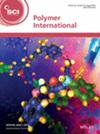Will Owens, Martin Worrall, David Norman, Myles Blurton, Fengzai Tang, Geoff West, Tony McNally
下载PDF
{"title":"环氧树脂和二维氮化硼纳米片复合材料(BNNS)作为电子器件的有效热管理涂层","authors":"Will Owens, Martin Worrall, David Norman, Myles Blurton, Fengzai Tang, Geoff West, Tony McNally","doi":"10.1002/pi.6770","DOIUrl":null,"url":null,"abstract":"<p>Efficient thermal management is an increasingly important factor in the development of future electronic devices where operating speed, device lifespan and safety are determined by optimising heat dissipation to reduce component temperature. The heat generated during continuous and/or cyclic operation can be dissipated using thermal interface materials (TIMs). A facile yet novel method based on a combination of centrifugal mixing and micropipetting was very effective at accurately depositing thin layers of an epoxy filled with a highly interconnected boron nitride nanosheet (BNNS) network. The use of composites of an epoxy and BNNS as a TIM was assessed by measuring the operating temperature of a diode on a printed circuit board, to replicate in-service use, using thermal imaging. The operating temperature of the device decreased by almost 57 °C on inclusion of a BNNS volume fraction (<i>φ</i>) of 0.15 and the thermal resistance by <i>ca</i> 50%. The device displayed excellent thermal stability and a consistent temperature response during cyclical operations over 10 h. The reliability of transistors depends exponentially upon operating temperature and even a 10–15 °C reduction can double the lifespan of an electronic device. © 2025 The Author(s). <i>Polymer International</i> published by John Wiley & Sons Ltd on behalf of Society of Chemical Industry.</p>","PeriodicalId":20404,"journal":{"name":"Polymer International","volume":"74 7","pages":"553-559"},"PeriodicalIF":3.6000,"publicationDate":"2025-04-17","publicationTypes":"Journal Article","fieldsOfStudy":null,"isOpenAccess":false,"openAccessPdf":"https://onlinelibrary.wiley.com/doi/epdf/10.1002/pi.6770","citationCount":"0","resultStr":"{\"title\":\"Composites of an epoxy and two-dimensional boron nitride nanosheets (BNNS) as a coating for efficient thermal management of electronic devices\",\"authors\":\"Will Owens, Martin Worrall, David Norman, Myles Blurton, Fengzai Tang, Geoff West, Tony McNally\",\"doi\":\"10.1002/pi.6770\",\"DOIUrl\":null,\"url\":null,\"abstract\":\"<p>Efficient thermal management is an increasingly important factor in the development of future electronic devices where operating speed, device lifespan and safety are determined by optimising heat dissipation to reduce component temperature. The heat generated during continuous and/or cyclic operation can be dissipated using thermal interface materials (TIMs). A facile yet novel method based on a combination of centrifugal mixing and micropipetting was very effective at accurately depositing thin layers of an epoxy filled with a highly interconnected boron nitride nanosheet (BNNS) network. The use of composites of an epoxy and BNNS as a TIM was assessed by measuring the operating temperature of a diode on a printed circuit board, to replicate in-service use, using thermal imaging. The operating temperature of the device decreased by almost 57 °C on inclusion of a BNNS volume fraction (<i>φ</i>) of 0.15 and the thermal resistance by <i>ca</i> 50%. The device displayed excellent thermal stability and a consistent temperature response during cyclical operations over 10 h. The reliability of transistors depends exponentially upon operating temperature and even a 10–15 °C reduction can double the lifespan of an electronic device. © 2025 The Author(s). <i>Polymer International</i> published by John Wiley & Sons Ltd on behalf of Society of Chemical Industry.</p>\",\"PeriodicalId\":20404,\"journal\":{\"name\":\"Polymer International\",\"volume\":\"74 7\",\"pages\":\"553-559\"},\"PeriodicalIF\":3.6000,\"publicationDate\":\"2025-04-17\",\"publicationTypes\":\"Journal Article\",\"fieldsOfStudy\":null,\"isOpenAccess\":false,\"openAccessPdf\":\"https://onlinelibrary.wiley.com/doi/epdf/10.1002/pi.6770\",\"citationCount\":\"0\",\"resultStr\":null,\"platform\":\"Semanticscholar\",\"paperid\":null,\"PeriodicalName\":\"Polymer International\",\"FirstCategoryId\":\"92\",\"ListUrlMain\":\"https://scijournals.onlinelibrary.wiley.com/doi/10.1002/pi.6770\",\"RegionNum\":4,\"RegionCategory\":\"化学\",\"ArticlePicture\":[],\"TitleCN\":null,\"AbstractTextCN\":null,\"PMCID\":null,\"EPubDate\":\"\",\"PubModel\":\"\",\"JCR\":\"Q2\",\"JCRName\":\"POLYMER SCIENCE\",\"Score\":null,\"Total\":0}","platform":"Semanticscholar","paperid":null,"PeriodicalName":"Polymer International","FirstCategoryId":"92","ListUrlMain":"https://scijournals.onlinelibrary.wiley.com/doi/10.1002/pi.6770","RegionNum":4,"RegionCategory":"化学","ArticlePicture":[],"TitleCN":null,"AbstractTextCN":null,"PMCID":null,"EPubDate":"","PubModel":"","JCR":"Q2","JCRName":"POLYMER SCIENCE","Score":null,"Total":0}
引用次数: 0
引用
批量引用




 求助内容:
求助内容: 应助结果提醒方式:
应助结果提醒方式:


